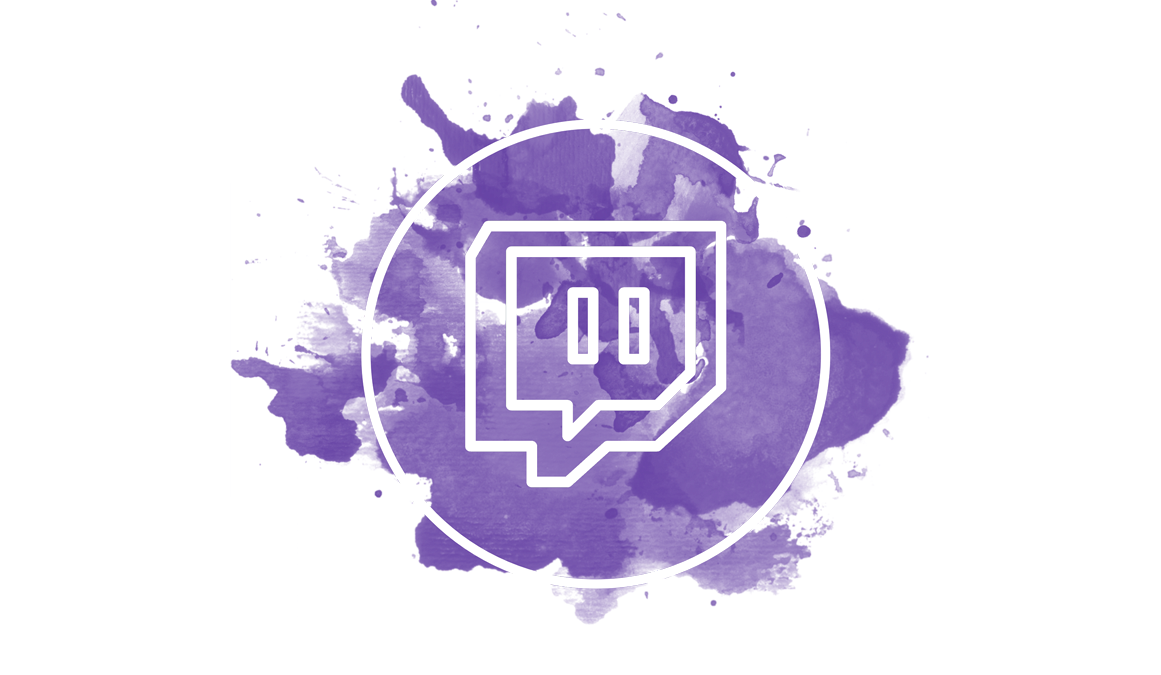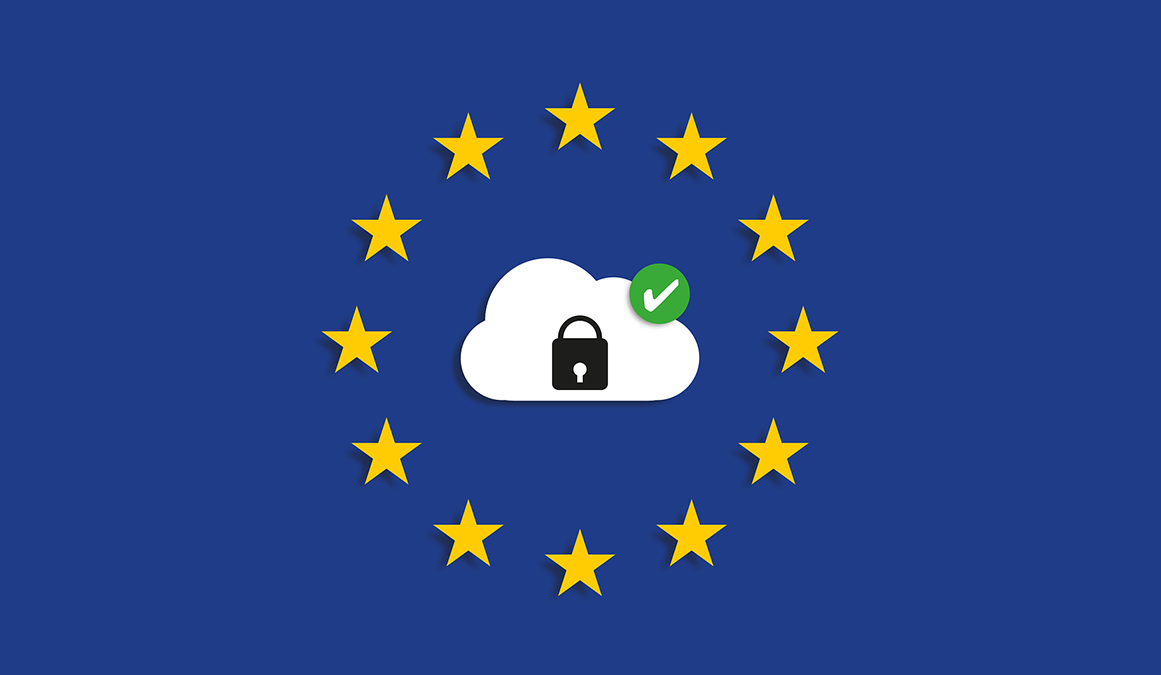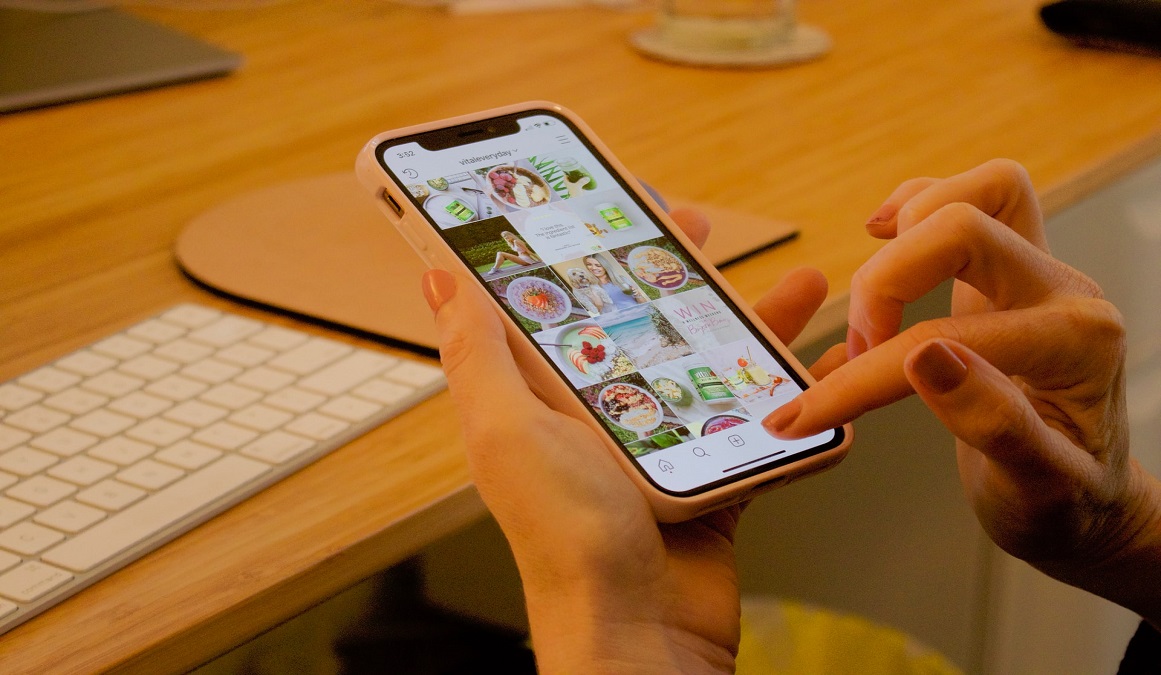Become an Influencer: How to Get Started as a Creator!
Influencers aren’t just stars from the entertainment industry these days. They’re also content creators on platforms like YouTube, Instagram or TikTok as well as streamers. Anyone can become an influencer as long as they’re willing to put in the time and effort to build a following. Find out here how you can establish yourself as a creator, what influencers earn and what risks the profession entails.
Become an Influencer: Tips for Getting Started
The first consideration – before worrying about what channels you want to use, what kind of content you want to make and so on, is the most essential one, namely: Which topic suits me?
Step 1: Think about Which Topic Suits you
The most important quality of influencers is their authenticity. That means they have to stand behind the content they’re communicating. So it doesn’t make a lot of sense to take on a topic that’s currently popular, but about which you know little or nothing or even find silly. Example: Starting a TikTok channel with comedy content if you’re not really into comedy doesn’t make much sense.
So first think about which subject area interests you and how you want to present your content. In the initial phase, when your channel is still small and you have no or only a few followers, you can also try things out. Experiment with what content works well and build your channel on it. The only important thing is that you stick with your chosen topic. Because in addition to authenticity, users also want continuity. Develop your own style and a central theme for your channel, so your followers always know what to expect and what you’re all about.
Step 2: What Added Value Does your Content Offer?
If you aren’t already a prominent figure, you have to build up reach and expert status. The same rule applies here as in any business: Think about who your target group is AND what this target group wants. You should also look at the competition, i.e. influencers who are already successful in the topic area you have chosen. Then think about what you could do differently to generate fans and build reach.
Example: Do you want to do beauty tutorials? Then think about if there is a way to present them in a different way (e.g. short “beauty hacks” on TikTok instead of long tutorials on YouTube). It’s perfectly legitimate to copy the big influencers at the beginning and develop your own style from them.
Step 3: Choose a Platform
This step follows almost automatically from the first two: If you know what you want to do and how, then you should consider which platform is best suited for it. Do you want to produce short, entertaining video clips? Then TikTok and Instagram are more suitable than YouTube. Do you want to present your topic in tutorials or infographics? Then you should focus on Instagram, Twitter and maybe a blog. Of course, you can also try several platforms at the beginning to experiment with where your content works best.
Step 4: Produce Content
Once you have clarified the WHAT, the HOW and the WHERE, it's time to get down to business: Start creating and publishing content. It’s best to make an “editorial plan” in advance and, as said before, experiment with it as you are getting started. It’s important that you post regularly.
Our article provides a nice summary for anyone who wants to get started as an influencer on TikTok: Become an Influencer on TikTok: Here’s what it’s all about!
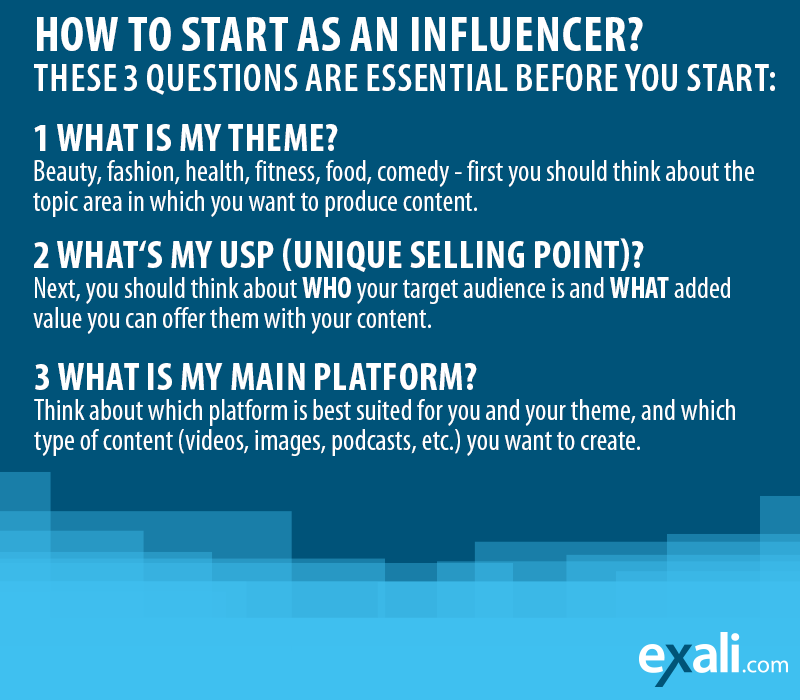
How Do you Become an Influencer?
The difference between a creator and an influencer is the reach. Anyone who publishes content on social media, streaming, video or podcast platforms, or blogs is a creator. But in order to become an influencer you need reach – how much depends on the platform in question.
Tips for More Reach and Followers
Aside from sticking to a subject area, here are a few tips on how to get better known:
- Post, post, post! Plan your content, determine when you will post, and stick to your plan. If you’re on holiday or can’t post for a while for some other reason, explain the reasons for the hiatus to your followers.
- Make sure you’re also visually recognisable: For example, always use the same filters or just post pictures on a specific topic.
- Use hashtags correctly: Hashtags help followers who are interested in a certain area to find you. Research on your chosen platform which posts there are for specific hashtags and which ones would be useful for you. However, you shouldn’t just rely on the most popular hashtags, because if millions of photos are posted for a particular hashtag, your post will quickly get lost.
- Don’t forget the social aspect: As in real life, social media is about give and take: Like, comment, share other people’s content and follow your own followers as well.
- Always stay up-to-date: Find out about the latest topics in your area as well as the current trends in social media.
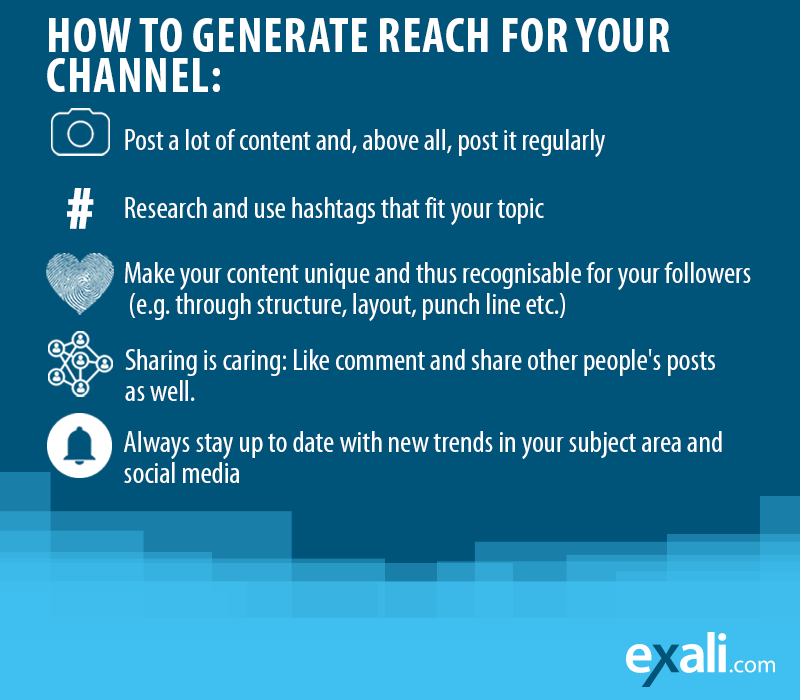
Thoughts on buying followers or Instagram bots:
There are some dubious ways to get more followers or reach. This includes, for example, buying followers on platforms or using Instagram bots to follow other users, like or comment on posts. Quite apart from the fact that this violates Instagram’s policies and you risk your account being blocked, people can see when an account is growing unnaturally fast or a bot is commenting instead of a real person (because often the comments don’t fit the posts). And then you lose your greatest asset, which is your credibility. Once the community’s trust is gone, it’s almost impossible to rebuild it.
Become a Micro-Influencer
Micro-influencers are influencers with relatively few followers – there’s no precise definition, but depending on the platform, the range is around 1.000 to 100.000 followers. Micro-influencers are usually specialised in a certain topic, often a niche, in which they bring a lot of expertise. They interact a lot with their fan base and are seen as particularly authentic and credible. That’s why many companies rely on micro-influencers. Because a smaller but loyal fan base is often worth more than millions of unmanageable followers.
According to Hubspot, micro-influencers score points with their authenticity, but also with the high level of commitment from the community. Several studies have also shown that influencer marketing with well-known stars is less effective than with micro-influencers. A study by Markerly shows, for example, that Instagrammers with fewer than 1.000 followers have an average like rate of 8 percent, while those with over 100.000 followers only have a 1.7 percent. So if you want to establish yourself as a micro-influencer in a certain area, you have a good chance of working with companies and positioning yourself as an expert. One example of this is the influencer Max Leo, who had around 10.000 followers when the watch brand Daniel Wellington contacted him and offered to work with him.
In addition to micro-influencers, there are other levels of influencers. We’ve summed this up in a graphic for Instagram and YouTube:
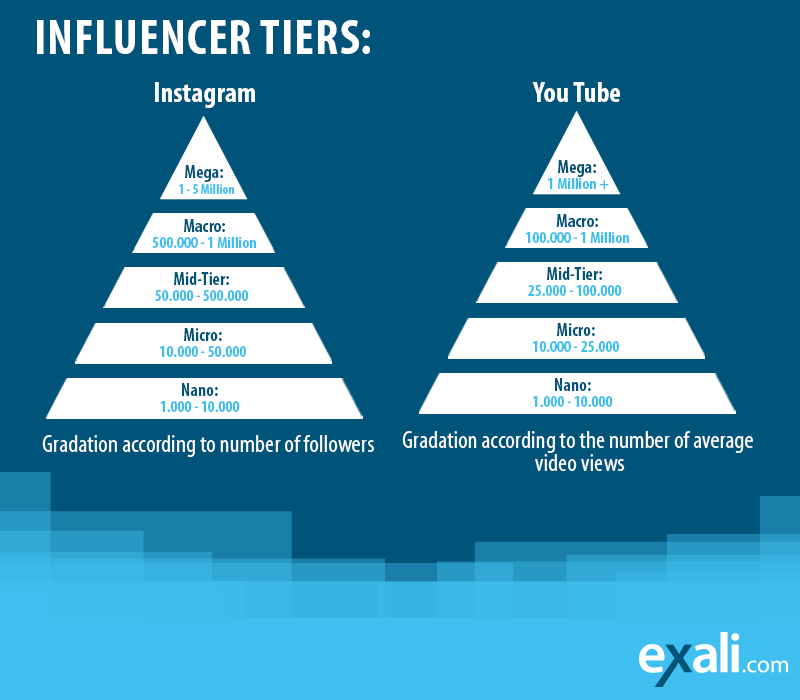
Earn Money as an Influencer
One of the largest German influencers Pamela Reif (over 8 million subscribers on YouTube, 8.4 million followers on Instagram (as of 2022)) earns around 65,000 euros a month with her fitness workouts on YouTube alone. But this level of income is just a dream for most influencers. A global study by the AI analysis platform Hype-Auditor surveyed 1.865 influencers with more than 1.000 followers about their income. The result was that only about 4 percent of influencers can actually live on their income.
That may not sound very motivating at first, BUT: The study also showed that almost half of the respondents make money with their accounts. The average income on Instagram is around 2.970 US dollars (about 2.600 euros) per month. On average, micro-influencers earn around 1.420 US dollars (approx. 1.200 euros) per month. Mega-influencers with over a million followers, on the other hand, earn an average of around 15.356 US dollars (approx. 13.500 euros) per month. The influencers surveyed generated the majority (40 percent) of their income with brand advertising.
Income Depends on the Platform
How you can earn money with your content as an influencer depends not only on lucrative advertising deals, but also on the reach of your channels. Twitch, for example, offers streamers the opportunity to generate money through subscribers and donations (bits) or by achieving a certain status. You can read more about this in our Twitch for Business article. On YouTube, however, creators earn a share of the channel’s advertising revenue if they are part of the YouTube Partner Program. TikTok now also offers a similar program with the TikTok Creators Fund. But you have to reach a certain level first before you can profit from these programs.
Risks for Influencers: Advertising Labelling and Infringements of Rights
There are some risks involved in working as an influencer. The labelling of paid partnerships and advertising is the biggest one. Well-known influencers such as Vreni Frost, Pamela Reif and Cathy Hummels recently went to court because they didn’t adequately label advertising as such. The risk of infringements of rights is also high for influencers, for example if they use or redistribute copyrighted or trademark-protected content.
Data protection and Imprint
Anyone who operates a channel as an influencer – i.e. who also earns money with the content – must also publish an imprint. Since influencers often also run blogs, they also have to observe the legal requirements there, such as the obligation to publish an imprint. The topic of data protection (GDPR) also plays an important role. We talk more about this in our article Risks for Bloggers.
Professional Indemnity Insurance for Influencers? It Exists!
If you work full-time or part-time as an influencer, with a little luck you can land lucrative partnerships with companies and earn good money. But as beautiful as the job can be, it’s also risky. And, who wants to give their hard-earned money back to lawyers or pay it out as compensation for damages?
Professional Indemnity Insurance from exali comprehensively protects influencers, regardless of whether they are bloggers, streamers or creators on YouTube, Instagram or TikTok. In the event of legal action (e.g. due to insufficient or missing advertising labelling or a violation of copyright law), the insurer checks at its own expense whether the action justified, defends against unjustified claims and pays justified claims for damages.
Since many influencers run their own blogs, they should also think about the possibility of a hacker attack or other cybercrime threats. These risks are also covered with the First-Party Cyber and Data Risks Insurance (FPC) add-on. The insurer pays, for example, for the costs of restoring the IT systems or hiring an IT forensics specialist.
Calculate your premium now:

Online Editor
Daniela has been working in the areas of (online) editing, social media and online marketing since 2008. At exali, she is particularly concerned with the following topics: Risks through digital platforms and social media, cyber dangers for freelancers and IT risk coverage.
In addition to her work as an online editor at exali, she works as a freelance editor and therefore knows the challenges of self-employment from her own experience.




